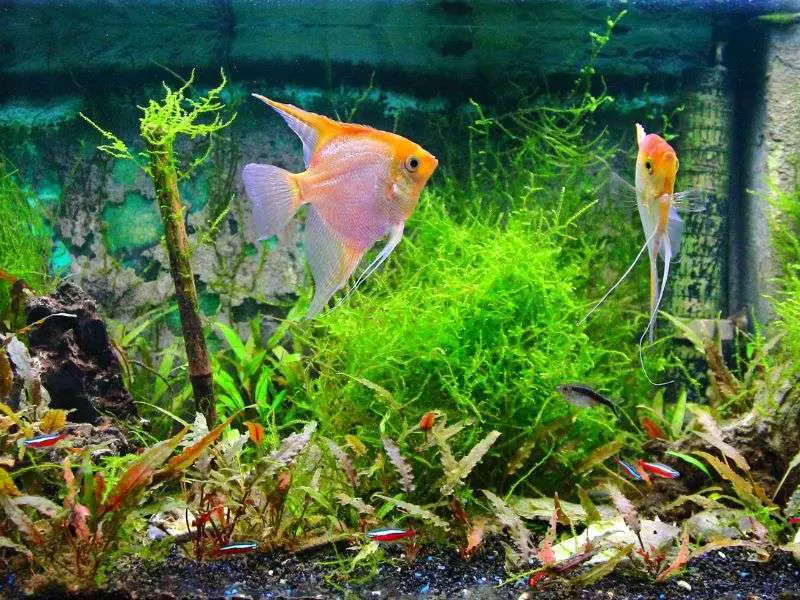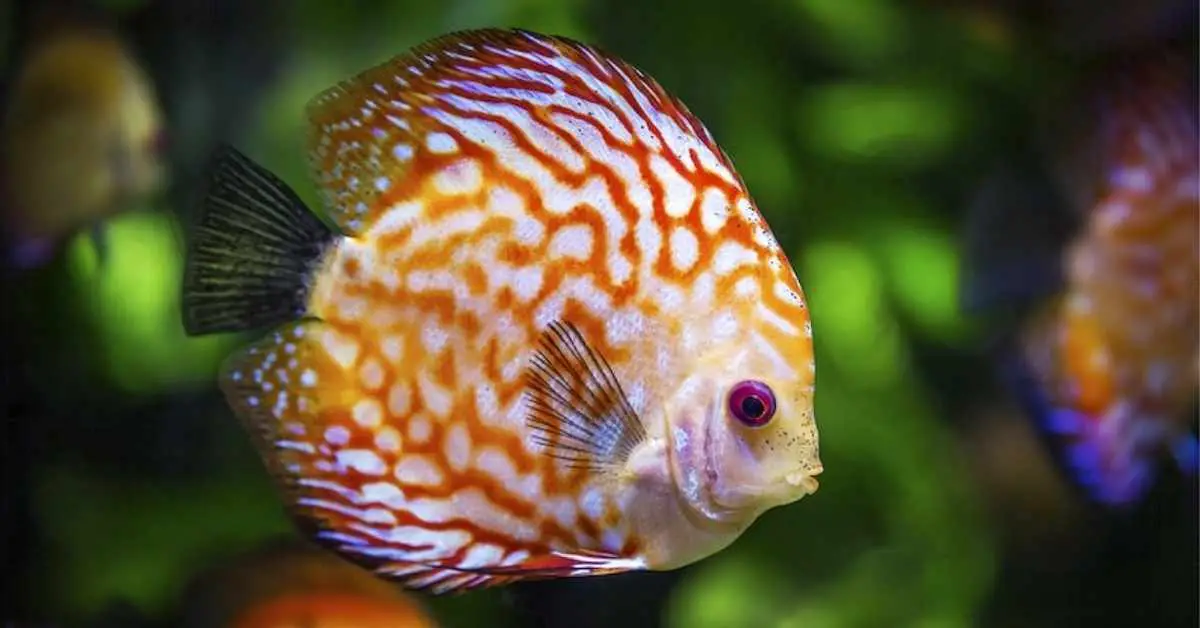Aquarium is an actually a container which is used to keep pet fish and other organisms. It can be a great addition to any home. They provide an appealing and aesthetical look and making your home attractive. If you are thinking of getting an aquarium, there are a few things you need to know first. This blog post will cover the benefits of keeping fish in an aquarium, the necessary equipment, and how to set up and maintain your aquarium.
Benefits of Keeping Fish in an Aquarium
Calming Effect of Fish: According to a study conducted by the University of Exeter, UK, keeping fish in an aquarium can have a calming effect on people. The study found that watching fish swim reduced levels of the stress hormone, known as cortisol by up to 30%. This can be helpful for people who suffer from anxiety or stress-related disorders.
Educational Value of Fish: Fish provide educational value, especially for children. They can learn about different species of fish, their habitats, and how to take care of them. Keeping fish in a tank can also teach us responsibility, as they need to be fed and the aquarium needs to be cleaned on a regular basis.
Aesthetical Value of Fish: In addition to being calming and educational value, fish can also be aesthetically pleasing. They have wide variety of colors and patterns, and can add interest and beauty to any room.

Necessary Equipment for Keeping Fish in an Aquarium
Aquarium: When choosing an aquarium, it is important to consider the size and type of fish you want to keep. Goldfish, for example, grow to be quite large and require a lot of space. Bettas, on the other hand, are relatively small and can be kept in a smaller aquarium. The material of the aquarium is also important to consider. Glass aquariums are the most popular type, but acrylic aquariums are also available in the pet business sector.
Filter: A filter is an essential piece of equipment for keeping fish in an aquarium because it helps to keep the water clean and free of harmful toxins. There are two main types of filters: mechanical and biological. Mechanical filters remove physical debris from the water, while biological filters provide a home for beneficial bacteria that help to break down waste products in the aquarium water.
Heater: A heater is necessary equipment for keeping tropical fish in an aquarium because they require warm water to thrive. The size of the heater you need will depend on the size of your aquarium and the number of fish you have. It is important to choose a heater that has an adjustable thermostat so that you can maintain a consistent water temperature.
Thermometer: A thermometer is an essential equipment for monitoring the water temperature in your aquarium so that you can ensure your fish are comfortable and healthy. There are different types of thermometers available on the market with reasonable cost, including digital and analog models. Some best thermometers even come with suction cups so that they can be attached to the inside of the aquarium glass.
Gravel: Gravel is a necessary part of an aquarium because it provides a place for beneficial bacteria to grow and helps to keep the water clean. There are many different types and colors of gravel available, so you can choose something that fits your personal style. It is important to rinse the gravel before adding it to your aquarium so that it does not cloud the water.
Steps for Setting Up an Aquarium
Choosing the Right Location: When choosing a location for your aquarium, it is important to consider both the aesthetic and functional aspects. The aquarium should be placed in a room where it can be enjoyed, but also in a spot that is out of direct sunlight and away from any drafty areas. Once you have found the perfect location, it is time to set up the aquarium.
Setting Up the Aquarium: Setting up the aquarium is relatively simple, but there are a few key steps that must be followed in order to ensure a successful setup. First, place the aquarium on a sturdy stand or table. Then, add the gravel and plants (if you use live plants), making sure to rinse them thoroughly first. Next, fill the aquarium with water, using a water conditioner if necessary. Finally, install the filter and heater according to the manufacturer’s instructions.
Filling the Aquarium with Water: Once the aquarium is set up, it is time to fill it with water. It is important to use treated tap water or distilled water in order to avoid introducing harmful chemicals into the tank. If you use tap water, be sure to let it sit for 24 hours before adding fish so that any chlorine can dissipate. When filling the tank with water, do so slowly in order to avoid disturbing the gravel and plants.
Installing the Filter and Heater: Installing both a filter and heater is crucial for keeping fish in an aquarium since they help maintain proper water conditions (i.e., temperature and filtration). Most filters will come with detailed instructions on how to install them; however, heaters typically need to be placed underneath gravel so that they are not visible and can disperse heat evenly throughout the tank.
Adding the Gravel and Plants: After the filter and heater are installed, it is time to add the gravel and plants (if you use live plants). When adding the gravel, do so slowly and carefully so as not to disturb the other elements in the tank. Live plants can be added at this time or later on, depending on your preference. If you add live plants, be sure to research which species are best suited for beginner aquariums.
Maintenance of an Aquarium
Feeding the Fish: Fish need to be fed regularly, at least once a day. The amount of food they need will vary depending on the type of fish and the size of the aquarium. Overfeeding can lead to water quality problems, so it is important to only give them as much food as they can eat in a few minutes.
There are many different types of fish food available, including flakes, pellets, freeze-dried foods, live foods, and more. It is important to choose a high-quality food that contains all the nutrients your fish need. You may also ask your local pet store for recommendations.
Cleaning the Aquarium: It is important to keep your aquarium clean to ensure the health of your fish. There are a few different ways to do this:
Regular water changes: You should do a partial water change (about 25%) every week or two. This will remove built-up toxins and replenish fresh water and minerals. To do a water change, simply remove some of the old water using a siphon or bucket and replace it with fresh tap water that has been treated with a dechlorinator.
Cleaning the gravel: Gravel should be cleaned every month. In this case, you should use an aquarium vacuum cleaner or gravel washer. This will remove any waste that has accumulated in the gravel bed and keep the aquarium water healthy from polluting the water.
Cleaning the filter: The filter should be cleaned every month or so as well; this will help it work more efficiently and prevent it from becoming clogged with debris. Simply remove the filter media (sponges, cartridges, etc.) and rinse them in old aquarium water before putting them back in place.
Cleaning algae: Algae can build up on glass surfaces and decorations over time; you can clean it off using an algae scraper or cloth soaked in vinegar (for glass) or rubbing alcohol (for plastic). Be sure not to scrub too hard, as this could damage surfaces.
Checking the Water Quality: It is important to check the water quality in your aquarium on a regular basis to make sure it is safe for your fish. You can do this using test strips, which are available at most pet stores. Test strips will test for things like ammonia, nitrites, and nitrates. If any of these levels are too high, it could be harmful to your fish.
Another way to check water quality is to use a home water testing kit, which is more accurate but also more expensive. These kits will test for a wider range of parameters, including pH, hardness, and alkalinity.
Adding New Fish: If you want to add new fish to your aquarium, it is important to do so slowly and carefully. Start by adding just a few fish at a time and wait a week or two before adding more. This will give the new fish time to adjust to their new environment and minimize stress levels. It will also allow you to keep an eye on them for any signs of illness or distress.
When choosing new fish, be sure to research their care requirements thoroughly so that you can provide them with the best possible environment. Also, try to choose fish that are compatible in size and temperament; this will help reduce aggression and territorial behavior.
Concluding Remarks
Aquariums can be a great addition to any home. They provide relaxation, education, and beauty all in one package. But before you can enjoy these benefits, you need to set up your aquarium properly and maintain it on a regular basis.
With just a little bit of effort, you can have a beautiful and thriving aquarium that will bring you years of enjoyment.

